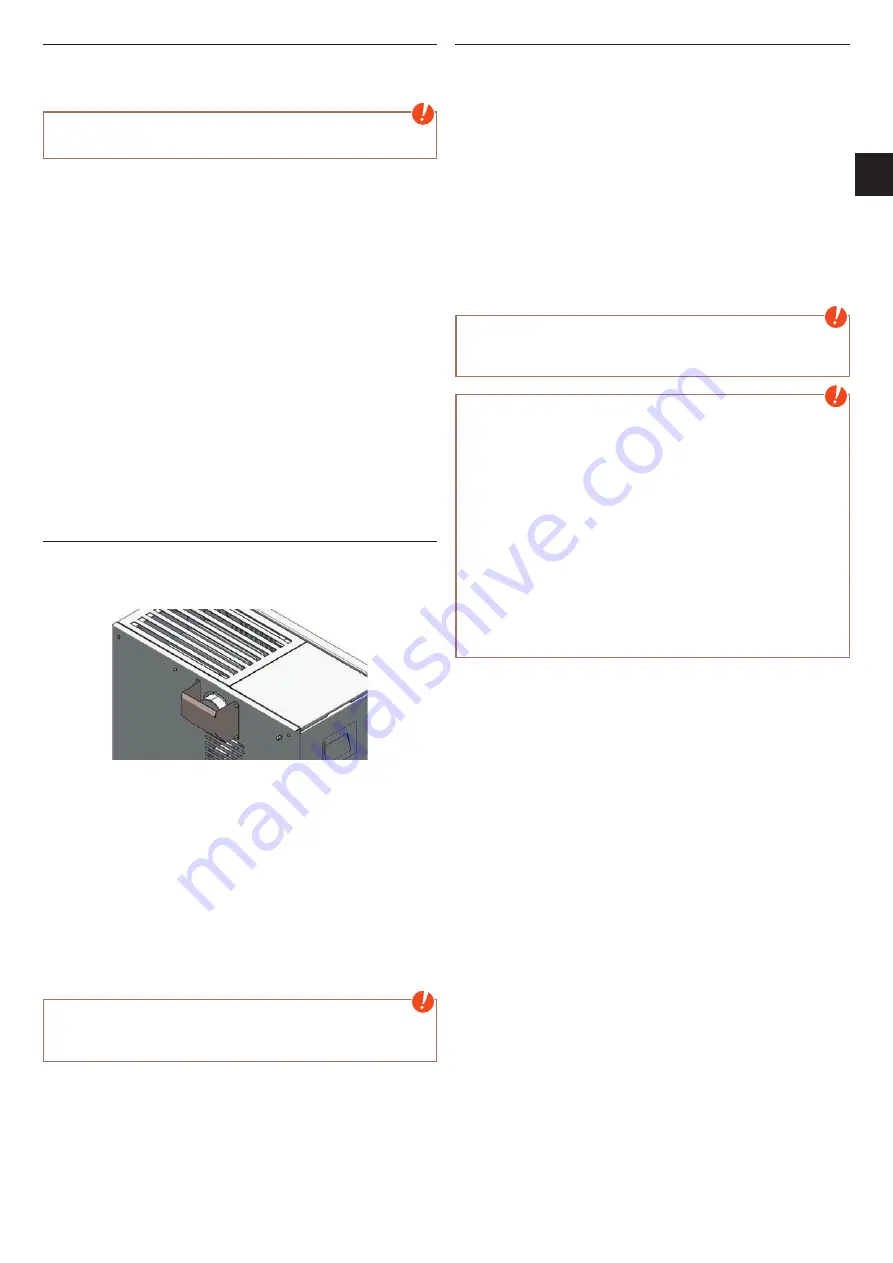
13
EN
Prior to set up
Floor bearing capacity
Ensure that the substructure is capable of bearing the weight of the stove prior
to set-up.
Note
No modifications may be made to the firing installation. This also leads to loss
of warranty and guarantee.
Floor protection
A base is required (glass, sheet steel or ceramic) if the floor is combustible
(wood, carpet, etc.).
Flue pipe connection
Q
Flue pipes pose a particular source of hazard regarding gas leaks and fire. Get
the advice of an authorised specialist company for the layout and assembly.
Q
Please observe the corresponding installation guidelines for walls panelled
with wood when connecting your flue pipes to the stove,
Q
Observe the formation of flue gas (atmospheric inversion) and draughts
when the weather is unfavourable.
Q
Infeed of too little combustion air can lead to smoke in the rooms or to flue
gas leaks. Hazardous deposits in the stove and chimney may also occur.
Q
If flue gas escapes, let the fire burn out and check whether all the air inlet
openings are free and the flue gas pipes and the stove pipe are clean. If in
doubt notify the master chimney sweep since draught malfunctions may be
connected to your chimney.
Convection air conduction
only for stoves with MultiAir
The MultiAir equipped stove is delivered with a cover on the convection air
outlet to prevent direct heat to the wall.
Operation without this cover or without attached convection pipes is not
allowed. If you do though no warranty and no liability is accepted for damage.
Q
The amount of air and temperature of one fan is designed to heat one
additional room.
Q
Note the regional specific fire safety regulations and clarify the connection
situation with the competent authority
Q
The max. temperature of the convection air is 180 °C at the air outlet.
Q
The convection air canal should be as short as possible.
Q
Keep the number of deflections as small as possible.
Note
Please pay attention to the national and country-specific building and fire
regulations when connecting the convection air pipes. Installation and
assembly must be performed by a trained specialist only.
Stoves type 1 (BA 1):
Q
These may only be operated with the combustion chamber door closed.
Q
Suitable for multiple occupancy. (note the different country regulations)
Q
The combustion chamber door may only be opened to add fuel and must
then be closed again otherwise other firing installations connected to the
chimney may be endangered.
Q
The combustion chamber door is to be kept closed when the stove is not in
operation.
Q
Fouling of the chimney i.e. deposits of highly inflammable materials such as
soot and tar and subsequently fire in the chimney may occur if the chimney
is miscalculated and dimensioned wrong and if wet wood is used.
If fire in the chimney occurs, disconnect the mains plug of the stove. Phone the
fire brigade and get yourself and other residents out of harm’s way.
Note
Due to the size of the combustion chamber door it is necessary not to
open the door abruptly, to prevent the flames coming out. Especially when
reheating into blazing flames.
Note
on ROOM-AIR DEPENDENT and
ROOM-AIR INDEPENDENT OPERATION:
Your stove has been tested as a room-air independent stove according to
EN13240 and to EN14785 and can be installed as well room-air dependent and
independent. In Germany it does not conform to the requirements for room-
air independent operation.
When installed room-air dependent in combination with room-air
installations (e.g. controlled ventilation and venting systems (extractors etc.)
it must be ensured that the stove and the room air system are monitored and
safeguarded mutually (e.g. via a differential pressure controller etc.).
The combustion air infeed of approx. 20 m
3
/h must be ensured.
Please observe the respective local regulations and rules in consultation with
your master chimney sweep. For changes after the printing of this manual, we
can not assume any liability. We reserve the right to change without notice.
example














































